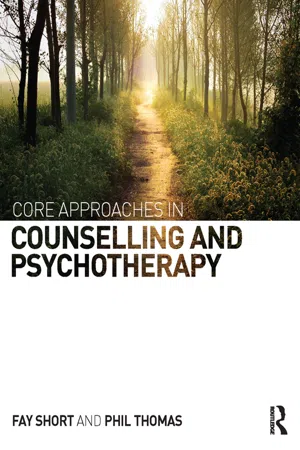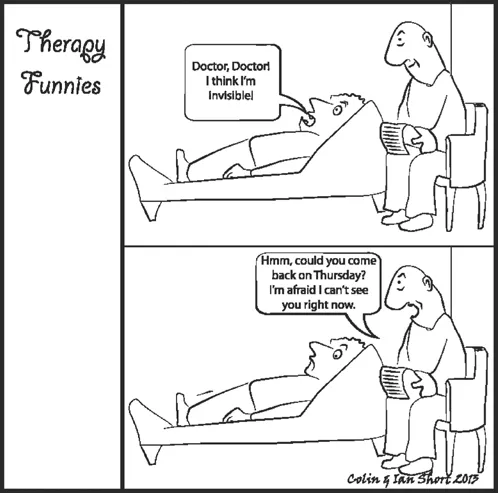![]()
Counselling and psychotherapy
CHAPTER CONTENTS
• Introduction to counselling and psychotherapy
• Defining counselling and psychotherapy
– Definitions of counselling and psychotherapy
– Differences between counselling and psychotherapy
– Career paths in counselling and psychotherapy
• Therapist and client roles in the therapeutic relationship
– Differences between helping and therapy
– Role of the client in therapy
– Role of the therapist in therapy
– Relationship between therapist and client
– Therapy in the modern world
• Boundaries and ethics in the therapeutic relationship
– Boundaries in therapy
– Therapeutic contract
– Ethical guidelines
• Appreciating diversity in the therapeutic relationship
– Cultural assumptions in mainstream therapy
– Multiculturalism in the therapeutic relationship
– Self-reflection to recognise bias and prejudice
– Criticism of multicultural therapy
– Working holistically
• Approaches, therapies and models
– Defining approaches, therapies, and models
– Purist versus non-purist perspectives
– Integration and eclecticism versus syncretism
– Types of integration and eclecticism
– Egan’s skilled helper model
INTRODUCTION TO COUNSELLING AND PSYCHOTHERAPY
This chapter aims to introduce the reader to the concepts of counselling and psychotherapy. Key concepts such as ethical issues and sociocultural diversity will be explored in this chapter. You will also be introduced to the idea of counselling and psychotherapy as career options and provided with a clear route to becoming a therapist in the UK. It is impossible to develop a good understanding of any specific therapy without first understanding the field in general, so this introductory chapter will provide you with a general overview of the fascinating field of counselling and psychotherapy.
LEARNING OUTCOMES
By the end of this chapter, you will be able to:
• appreciate the differences and similarities between the fields of counselling, psychotherapy and psychology
• discuss the different roles of the therapist and the client in the therapeutic relationship
• acknowledge the importance of maintaining boundaries and outline the ethical issues associated with therapy
• appreciate the differences between an approach, therapy and model, and discuss each of these with consideration of the differing methods adopted by practitioners
DEFINING COUNSELLING AND PSYCHOTHERAPY
LEARNING OUTCOMES
After reading this section, you will be able to:
• outline the definitions of counselling
• appreciate the differences between counselling and psychotherapy
• recognise the career possibilities in the field of counselling and psychotherapy
Definitions of counselling and psychotherapy
UK versus US
American spelling = Counseling
British spelling = Counselling
Simplicity
For the sake of simplicity, this textbook will focus on ‘counselling’ (British spelling) whenever the term is used. However, in general, this book will use the terms ‘therapy’ and ‘therapist’ to refer to all aspects of the therapeutic encounter.
What are counselling and psychotherapy?
British Association for Counselling and Psychotherapy (BACP) definition of counselling and psychotherapy
‘Counselling and psychotherapy are umbrella terms that cover a range of talking therapies. They are delivered by trained practitioners who work with people over a short or long term to help them bring about effective change or enhance their wellbeing.’ (BACP, 2013)
British Psychological Society (BPS) definition of counselling
‘Counselling is concerned with the interplay between psychological principles and the counselling process and is developed by substantial reflection on practice and research. Its understandings derive both from formal psychological enquiry and from the interpersonal relationships between practitioner and the client.’ (BPS, 2013)
American Psychological Association (APA) definition of counselling
‘Counseling psychology centers on typical or normal developmental issues as well as atypical or disordered development as it applies to human experience from individual, family, group, systems and organizational perspectives. Counseling psychologists help people with physical, emotional and mental disorders improve wellbeing, alleviate distress and maladjustment, and resolve crises. In addition, practitioners in this professional specialty provide assessment, diagnosis and treatment of psychopathology.’ (APA, 2013)
World Health Organization (WHO) definition of counselling
‘Counselling provides a supportive and non-judgemental atmosphere for people to talk over their problems and explore more satisfactory ways of living.’ (WHO, 2013)
To summarise, counselling and psychotherapy include the following:
Collaborative relationship between therapist and client
Client seeks to enhance his or her emotional or psychological wellbeing
Therapist seeks to provide a supportive environment in which the client can work towards seeking to enhance his or her emotional or psychological wellbeing
What does a therapist do?
Essentially, a therapist will provide support to those in need by offering a safe non-judgemental environment in which the client can explore his or her own issues
Specifically, a therapist may offer support for distinct clients and/or problems
Client groups may include:
Individuals
Groups
Families
Spouses/partners
Children
Adolescents
Adults
Older adults
Employees
Students
Problem types may include:
Depression
Stress
Anxiety
Low self-esteem
Low confidence
Poor anger management
Insomnia
Eating disorders
Addictions
Marital or relationship difficulties
Sexual disfunctions
Employment issues
Financial concerns
Prior trauma or abuse
Bereavement
Modern public perception is much more positive towards therapy
British Association for Counselling and Psychotherapy (2010a) conducted a wide-scale review of public attitudes towards counselling and psychotherapy
Meta-analysis of current research in the field followed up by a telephone survey of 1440 adults in the UK
21% of respondents had consulted a counsellor in the past
88% of respondents agreed that consultation with a counsellor might make many people happier
What happens in counselling and psychotherapy sessions?
Therapy sessions can vary depending on the orientation of the therapist, issues raised by the client, and demands of the service in which the therapy is offered. However, in general, most therapy will follow this pattern
Initial contact made by a referral agent or the client
Client registers by completing an initial written assessment (usually in the form of a questionnaire)
Client attends an initial meeting to assess his or her needs – risk assessments will also be completed at this time and further referrals may be made if the client is deemed unsuited for the specific type of therapy
Client is allocated to an appropriate therapist (may be the therapist from the initial assessment) or added to a waiting list for the next available therapist (if the service is particularly busy)
Client attends a first session with the therapist
First session typically involves information gathering and contracting – client is invited to tell his or her story, therapist will outline important policies and procedures (including confidentiality), and relationship boundaries will be established
Client attends a series of sessions to work through his or her issues
Each session will typically last for one ‘therapeutic hour’ (50 minutes)
Sessions will often run once per week for an agreed time frame
Short-term therapy might run for as little as six weeks; long-term therapy could run for years
If possible, client is given advance warning in the penultimate session so that the relationship can be drawn to a satisfactory close
Client attends the final session with the therapist
Final session typically involves reflection on progress and ending the relationshi...

